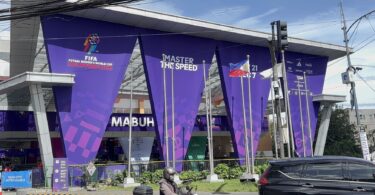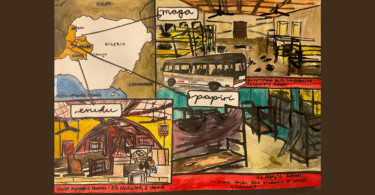York, England, UK – When one thinks of “Vikings,” negative connotations of raiding, exploration, and fierce warriors may come to mind. In the city of York in England, the positive contribution of the Vikings led the city to become a cultural hub.
The JORVIK Viking Centre museum best tells this “fierce” narrative.
Listen to the author read this article:
Jorvik is the Old Norse name for the city of York. Jorvik was once known as the capital of Viking territory in Britain from 866 AD to the 10th century.
In 1972, an excavation in the York city center took place to make way for new buildings and shops.
Known as the Coppergate Dig, the excavation found over 40,000 Viking artifacts and materials and thus continued for five years. The question remained on how to preserve and display these findings. In 1984, the JORVIK Viking museum opened its doors.
The museum consists of three different areas of experience.
When first arriving, guests are taken underground to view the remains of the reconstructed Viking village from the Coppergate Dig. There are 18 Viking houses dating back to the year 910 presented beneath the glass.

Visitors can walk on top of the glass and observe the colorful remains below. Museum guides, dressed as Vikings, explain to visitors that we can tell what functions these houses had.
For example, one house used to dye the colors of the Viking clothes evidenced in the matted red dirt surrounding the remains.
Another house was marked a blacksmith’s house because of the deposits of animal fats and metal extracts in the dirt gravel. Excavators also uncovered numerous Viking toilets, thanks to the remains of Viking stool samples in the dirt.
Visitors are then taken on an immersive ride that whisks guests back to the Viking years through a reconstructed village in 10th century York.
A “time machine” capsule glides guests past the homes of blacksmiths, butchers, and a market venue. Animatronic Vikings are interactive, both moving and speaking. Varying smells also are present throughout the ride reflecting what is occurring in the village creation.

Guests are then returned back to the present time and emerge into a room of traditional museum artifacts. Viking skeletons are highlighted where scientific analysis tells how the individuals died and what their bones reveal about Viking-age York.
From shoes, combs, musical instruments, pots and jewelry, each Viking artifact tells its own story.
The museum highlights two artifacts in particular.
The first is the only Viking-age sock found in England. With many holes and tears, the sock was well-used. Visitors today can still see the intricate details of thread patterns that formed this sock.
The second artifact is a piece of Viking feces. Parasite eggs were found in the feces, telling modern audiences much about the diet and health of Vikings.

I spoke with two of the Viking guides at the museum on the impact of the JORVIK Viking Centre to the greater York community.
They said that that Vikings are an important part of the city’s heritage and that there is a large identity of York with Viking culture.
The museum is a big, popular tourist attraction, they said, that is often sold out, drawing large crowds to York. They said that people come from all over Europe – and the world – to visit.
The Viking poop, they said, is the most popular exhibit.
But the amazingly preserved Viking sock, they said, also gets a lot of attention. Visitors can see the binding techniques, where the sock has been patched and how much work someone put into it.

The cooking pot, with distinctive prints, also deserves recognition, the guides said. Contemplating that 1,000 years ago someone took the time to create it with such detail may be the closest a person now can come to seeing where Viking hands would have been.
That is the power of history touching daily life.
I highly recommend visiting the Jorvik Viking Centre museum in York to gain appreciation of Viking culture and the history of the city of York. You will leave the museum with a new understanding of Vikings, as not just raiders and warriors, but essential to modern day civilizations.
Norah Springborn is a Senior Correspondent with Youth Journalism International.



